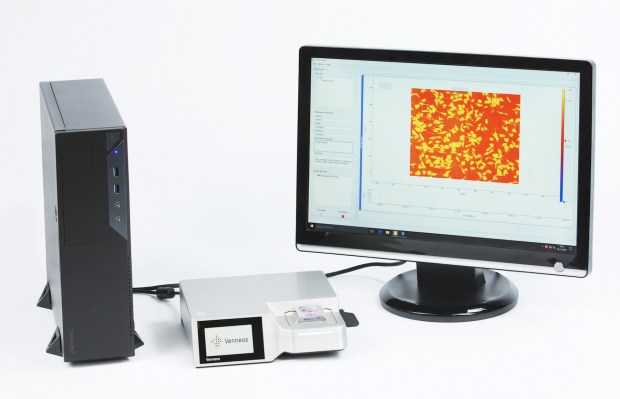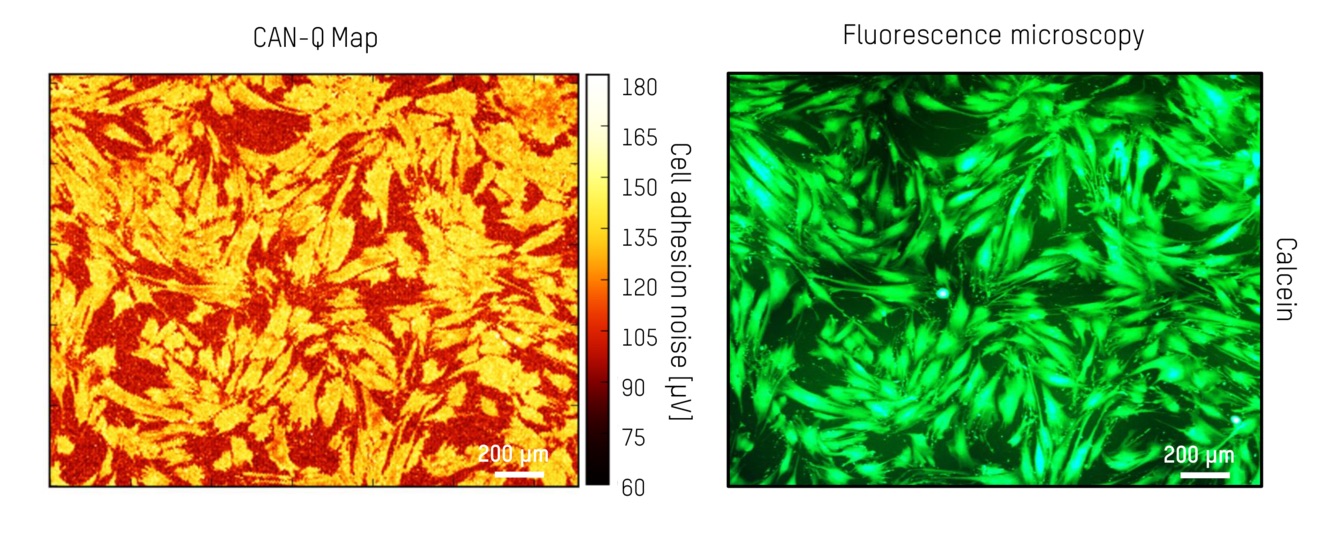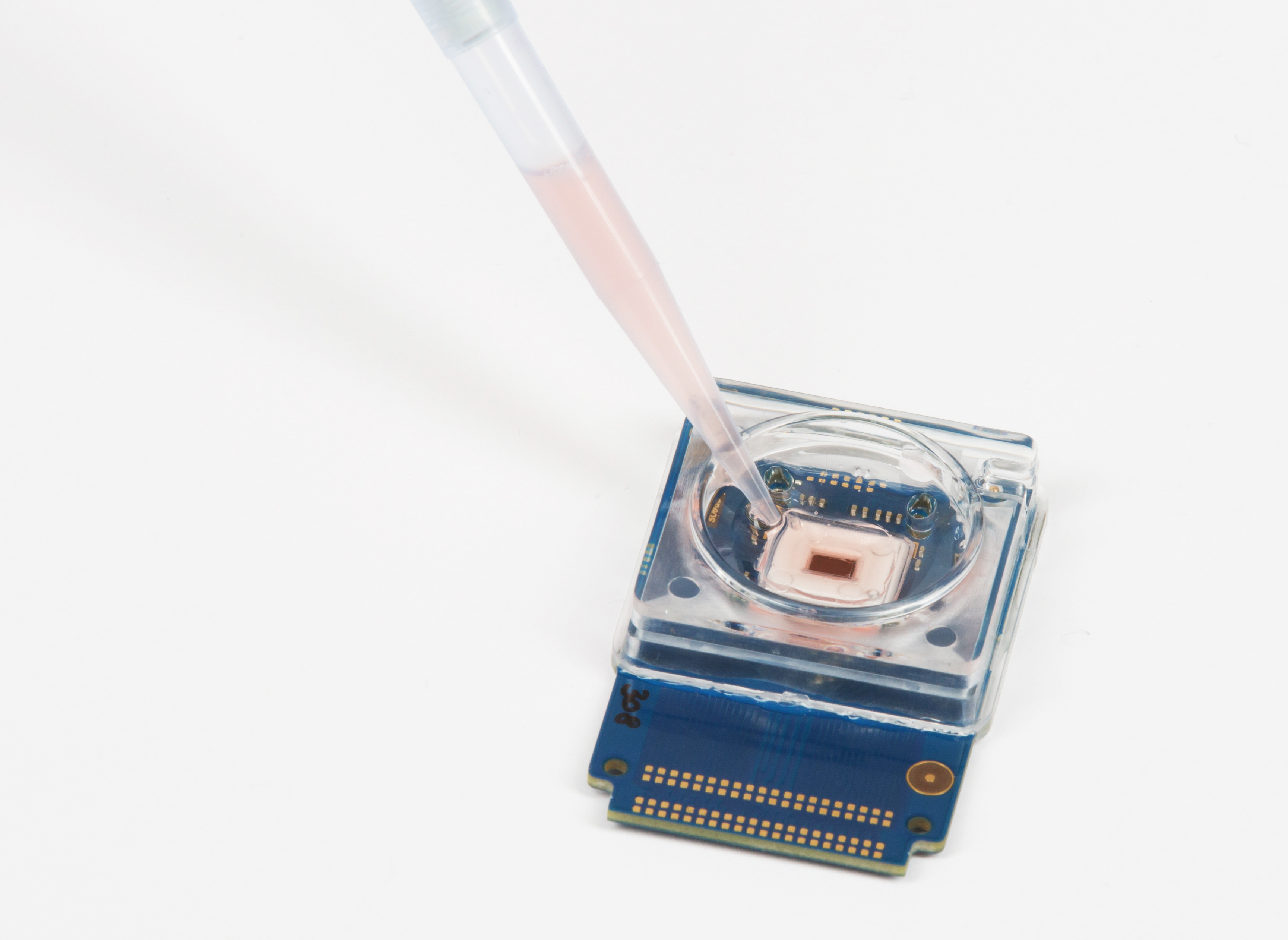The imaging technologies used in the medical and biotech fields may be powerful and indispensable for research and diagnosis, but they can also be slow and clumsy — relics of techniques that go back decades. Venneos wants to change that with its CAN-Q method and device, which allow easy and continuous monitoring of a handful of individual cells without any of the fuss or mystery of existing solutions.
The founders showed off their tech at the Hardware Battlefield at CES.
A quick primer for anyone who’s fallen behind on their bioimaging tech. If you want to watch a selection of cells closely to see whether a drug is effective, or whether they exhibit certain characteristics, your main options are microscopy and impedance spectroscopy.
[gallery ids="1434949,1434951,1434947,1434960,1434963,1434959"]
The first is, as you might guess, using a powerful microscope to manually observe the cells — but this also generally uses a marker, like a fluorescent dye, to make cells visible, limiting the duration and range of effects that can be watched for. The second has cells growing directly on electrodes, which measure electrically what cells are up to. But this indirect observation is difficult to characterize — sort of like trying to guess what someone looks like from their footsteps.
Venneos, a German company with a dozen employees and a million euros in angel funding, aims to knock these techniques flat on their backsides with its compact, affordable and simple alternative: CAN-Q.
Cell Adhesion Noise relies on an effect that appears when a cell adheres to a surface: in the tiny (think nanometers) gap between cell and substrate, predictable electrical properties arise that can be detected by Venneos’s custom chip. Each individual cell’s shape, size, movements and other properties, like electrical signaling, are recorded.
The machine is the size of a large hardback book and produces results like this in minutes:
“CAN-Q combines the advantages of both technologies: label-free readout, easy measurement procedure and automated analysis,” explained Venneos co-founder Jonas Lehmann. “Our technology is sensitive to a broad spectrum of cellular parameters and can distinguish them on a single-cell level.”
With no dyes to deal with, an all-digital process, and quick turnaround on data that can be manually, automatically or continuously monitored, the device does seem to have it all.
The CAN-Q chip contains the custom silicon and can be reused. The station contains the hardware interface, the UI for directing experiments and seeing initial results, and so on. The former costs around $100 and the latter about $25,000 — par for the course for this type of highly specialized tech. You should see the price tag on an fMRI machine.
The company is growing both in size and ambitions; they’re both hiring and fundraising right now. The plan is to focus on research institutions and universities where the technology can prove itself, then to move upmarket.
“In parallel we are building larger devices that suit the needs of pharma companies for drug discovery,” said Lehmann. “Last step is bringing this technology from research and drug discovery to diagnostic questions and personalized medicine. We would like to see several CAN-Qs in cancer centers and at every hospital.”


